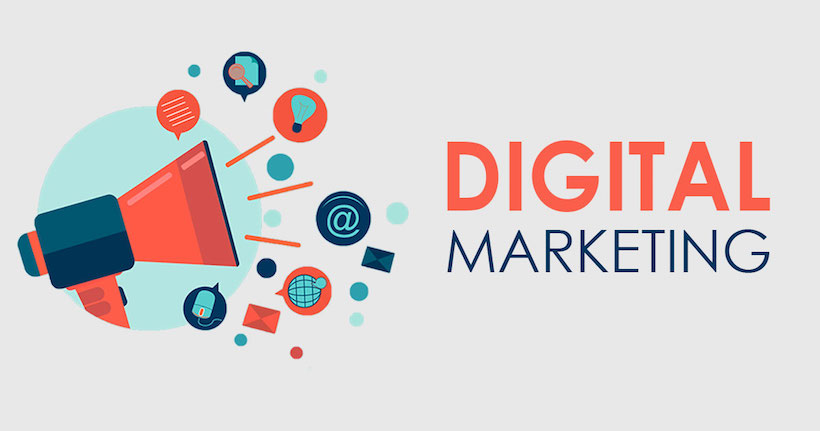Digital Marketing of Drugs: A Paradigm Shift, Pharma companies are increasingly looking to cut corners as a major part of their budget is expended on sales reps. Digital marketing has emerged as a worthy alternative and the companies are warming up to it.
Quick Links
Digital Marketing of Drugs: A Paradigm Shift
Socio-economic structures and the global demographic context are dramatically changing in the pharmaceuticals business. A June 2007 report by Pricewater house Coopers (PwC), titled Pharma 2020: The Vision, identified seven reasons for the change.
These include the soaring burden of chronic diseases, increasing influence of healthcare policy makers and payers on what a doctor can prescribe, rising instances of pay for performance, blurring boundaries between different healthcare forms, highly varied markets of the developing world, where the demand for medicines is likely to grow exponentially over the next 13 years, governments beginning to focus on prevention rather than treatment (investment in preemptive measures yet to happen), and regulators becoming more risk averse.
All these challenges, needless to say, have a direct impact on how drugs are sold in the market. To add to these, another important area is to identify the alternate marketplace of an out-patented drug. As a result, it is becoming increasingly important to define appropriate markets and an effective sales strategy for pharma products, an optimal sales and marketing strategy that can minimise the risk associated with the said challenges.
Obsolescence of sales reps
The pharma industry has traditionally worked to promote its products through campaigns. A PwC survey observed that between 1996 and 2005, the total real spending on pharma promotions rose from $11.4 billion to $29.9 billion in the US. As a result, till very recently, pharma companies used to spend 40 percent of their marketing budget on sales representatives. Many of the biggest companies are now saturated with sales reps and their selling techniques are increasingly becoming ineffective. No surprise that the pharma lobby has initiated several measures to reduce overheads associated with sales reps
Pfizer, for instance, started this trend in 2005, and many other organisations followed suit. The industry eventually shed nearly 60,000 positions by the end of 2006. To find an alternative marketing means, John Mack, reported in Pharma Marketing News 2014, that in the Cegedim Strategic Data (CSD) Audit, 20 pharma companies that spent the most on total promotion—which includes traditional professional detailing, e-detailing, direct-to-consumer (DTC) advertising, professional meetings, and journal advertising—spent $14,784 billion in 2013. This does not include the cost of supplying drug samples
Digital marketing and beyond
The key question, therefore, is to find the new avatar of pharma marketing. But before we jump to a conclusion, let us further analyse the major trends in this space in 2015. As these trends significantly impact marketing strategies, the question really is whether the landscape has changed at all since 2006. The answer is an emphatic ‘yes’ and there are five major trends through which the change manifested itself.
Trend 1:
Rapid shift in consumer behaviour with increased proliferation of the internet, mobile technologies and social media. Changing patient/doctor behaviour demands a move to multichannel selling models, informed by deep customer analytics
Trend 2:
Price pressures, reducing sales force effectiveness, and increasing cost of interaction, demands an innovative commercial platform that is enabled by an intensive digital and multichannel framework.
Trend 3:
Social media providing a wealth of untapped and unstructured data on consumers. Companies seek ways to ‘simplify’ the information, processes and services in this space.
Trend 4:
The risk of a lot of medical reps losing their jobs over the next few years because of high costs. Healthcare, as outlined by PwC, will go on to become completely patient-centric by 2020. Keeping the patient at the centre, the concentric circle will comprise of the pharma value chain, the payer and the provider. In 2006, it was more of three separate units trying to build a model, without having adequate coordination between them. The units, by 2020, will be connected with seamless data exchange systems
Keeping all these trends and changes in perspective, the pharma industry—in collaboration with information technology (IT)—has come forward to create a transformational business model, one that would take complete ownership of people, processes and tools, and provide an end-to-end solution for pharma companies in the areas of sales and marketing. For pharma companies, this solution should be based on a ‘commercially alligned’ and ‘customer centric’ business model so that they can outsource their sales and marketing process from start to finish
Essentially, this solution would have building blocks that include a digital marketing framework (CRM/SFA, sales analytics, social media analytics, mobility solutions), contract sales organisation (for improvement in sales force effectiveness), an MCM framework (MCM, campaign management and reporting), hosting (SFA and core apps), and other BPO/KPO services.
Multichannel marketing and business benefits
With this proposed solution of marketing enablement, there is expected to be a distinctive value proposition. As indicated before, the fundamental objective of this model is to enable pharmaceutical sales and marketing organisations with a technologically forward, commercially aligned and customer centric business model.
This would help them to measure and continuously improve their sales and marketing initiatives leading to simplified processes, increased return on investments, enhanced sales force effectiveness, and improved relationship with all stakeholders in the pharma ecosystem, including physicians and patients. Some of the resultant business benefits are as follows.
Identification:
A transformational business model that would enable clients to have a commercially-aligned, collaborative and streamlined environment, and greater flexibility to adapt to changes in interactions with customers
Management:
End-to-end outsourced sales and marketing processes, data consolidation from various key stakeholders of the pharma ecosystem, employing business analytics on the data to derive meaningful information that can be acted upon.
Tracking and reporting:
Establishing essential key performance indicators (KPIs) to track and continuously improve on benefits; accurate and simplified reporting, i.e. reporting as a service
Recognition:
Simplified processes, increased return on investments, enhanced sales force effectiveness and improved relationship with all the stakeholders in the pharma ecosystem including physicians and patients.
Conclusion
With the advent of concepts like multi-channel marketing to facilitate DTC, the pharma industry is still not fully geared to adopt digital marketing. In 2013, 20 top pharma companies spent around $14,784 billion, and from the DTC perspective, the actual spent rate always falls behind by 25 percent of the expected value.
This proves that there is always room for improvement and sooner they warm up to the digital medium, the faster it will increase sales. With the introduction of digital models like multi-channel marketing, pharma industries are looking at various CRM tools to enable this strategy.
Lastly, the pharma industry expects this new digital platform to be an extended sales and marketing organisation enabled by IT, to simplify the process, reduce costs, improve market share, and boost profitability. It is a joint responsibility of the pharma companies to adopt new digital platforms to come up with new features to cope up with expectations.
Must Read –







